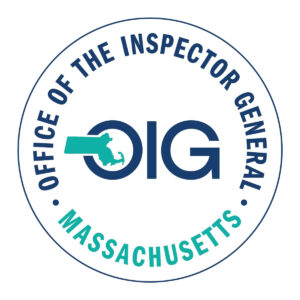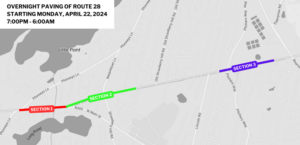 BOSTON – The Massachusetts Senate unanimously passed a bill recently that would invest $1.5 billion in K through 12 public education.
BOSTON – The Massachusetts Senate unanimously passed a bill recently that would invest $1.5 billion in K through 12 public education.
The Student Opportunity Act would update statewide education policy and support approaches to closing opportunity gaps for students throughout the Commonwealth, regardless of zip code or income level.
Over time the bill could provide up to $2.2 billion, assuming inflation.
The act would help school districts that serve high concentrations of low-income students.
School districts across the state would also benefit from updates to the existing funding formula, along with increased investing in other programs to aid education, including transportation, school construction and renovation, and special education.
Cape and Islands State Senator Julian Cyr (D-Truro), a member of the Joint Committee on Education, said the bill will profoundly affect the lives of tens of thousands of students across the state.
“I look forward to realizing a bolstered K-12 public education system across Cape Cod, Martha’s Vineyard, Nantucket – and the entirety of Massachusetts – in the coming years thanks to this landmark legislation,” Cyr said.
“I urge the House to take swift action and look forward to seeing the bill signed into law.”
The Student Opportunity Act fully implements the recommendations of the 2015 Foundation Budget Review Commission (FBRC) ensuring that the school funding formula provides adequate and equitable funding to all districts across the state.
The bill provides an estimated $1.4 billion in new Chapter 70 aid over and above inflation when fully implemented over the next seven years. The bill modernizes the K-12 education funding and policy landscape in four areas:
- Estimates school districts’ employee and retiree health care costs using up to date health insurance trend data collected by the state’s Group Insurance Commission (GIC).
- Increases special education enrollment and cost assumptions to more accurately reflect district enrollment.
- Increases funding for English learners (EL) that is differentiated by grade level to reflect the greater resources required to educate our older EL students.
- Addresses the needs of districts educating high concentrations of students from low-income households by:
- Providing additional funding based on the share of low-income students in each district; districts educating the largest percentage of low-income students will receive an additional increment equal to 100% of the base foundation;
- Returning the definition of low-income to 185% of the Federal Poverty Level, as opposed to the 133% level that has been used in recent years.
In addition to implementing the FBRC’s recommended formula changes, the Student Opportunity Act provides additional state financial support in several categories to help public schools and communities deliver a high-quality education to every student. Those fiscal supports include:
- Increasing foundation rates for guidance and psychological services in recognition of the growing need for expanded social-emotional support and mental health services.
- A commitment to fully funding charter school tuition reimbursement, which provide transitional aid to help districts when students leave to attend charter schools, within a three-year timetable.
- Expanding over four years the special education circuit breaker, which reimburses districts for extraordinary special education costs, to include transportation costs in addition to instructional cost.
- Raising, as the result of a further amendment, the annual cap on Massachusetts School Building Authority (MSBA)spending, for construction and renovation by $200 million (from $600 million to 800 million) , enabling more projects across the state to be accepted into the MSBA funding pipeline, which reimburses towns and cities for a portion of school building costs.
The Student Opportunity Act also establishes the 21st Century Education Trust Fund to provide districts and school’s access to flexible funding to pursuing creative approaches to student learning and district improvement.
In order to track and reproduce successful school and district-level innovations and policies, the legislation calls on school districts to develop and make publicly available plans for closing opportunity gaps. These plans will include specific goals and metrics to track success.
The Secretary of Education will collect and publish data on student preparedness in each district for post-graduate success in college and the workforce.
Moreover, the Student Opportunity Act establishes a Data Advisory Commission to help improve the use of data at the state, district, and school levels to inform strategies that strengthen teaching, learning and resource allocation.
Following robust debate on the floor, the Senate also adopted several amendments to the Student Opportunity Act related to recovery high schools, Massachusetts School Building Authority and municipal fiscal challenges related to Ch70.
To ensure that education-funding levels remain adequate, effective and equitable, the legislation also includes forward looking provisions to address additional funding challenges and policy areas. The Student Opportunity Act:
- Directs the Department of Revenue (DOR) and DESE to analyze the method of determining required local contributions in the Chapter 70 school funding formula for the purpose of improving equity, predictability and accuracy; and
- Establishes a Rural Schools Commission to investigate the unique challenges facing rural and regional school districts with low and declining enrollment. The Commission will make recommendations for further updates to help impacted districts and communities.
The legislation now moves to the Massachusetts House of Representatives.
























